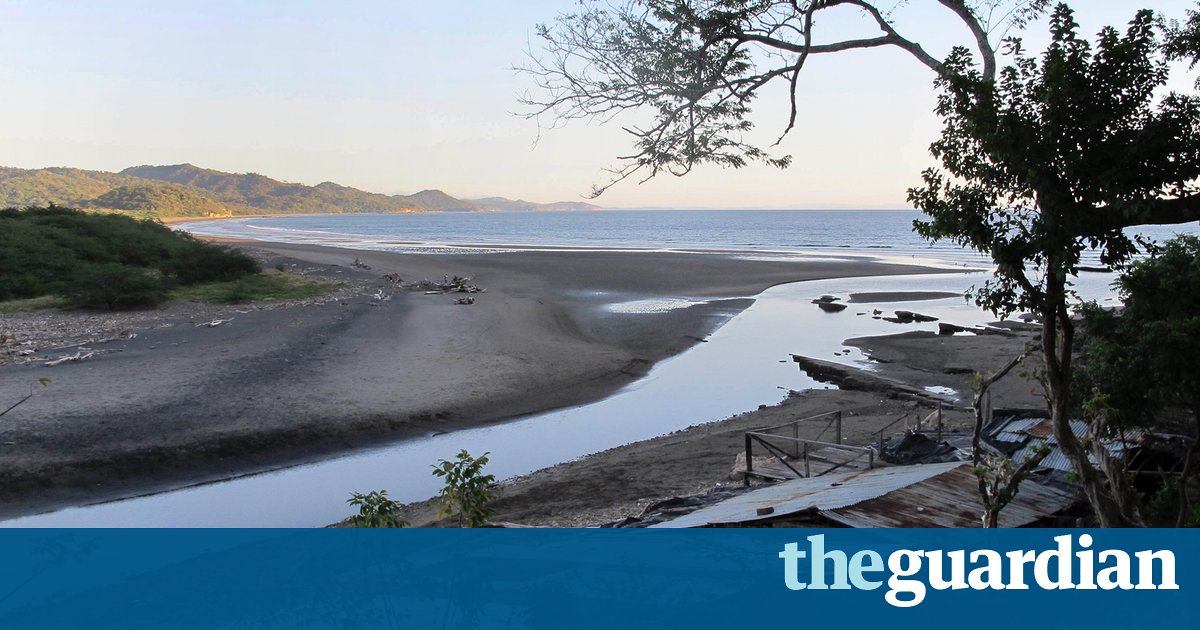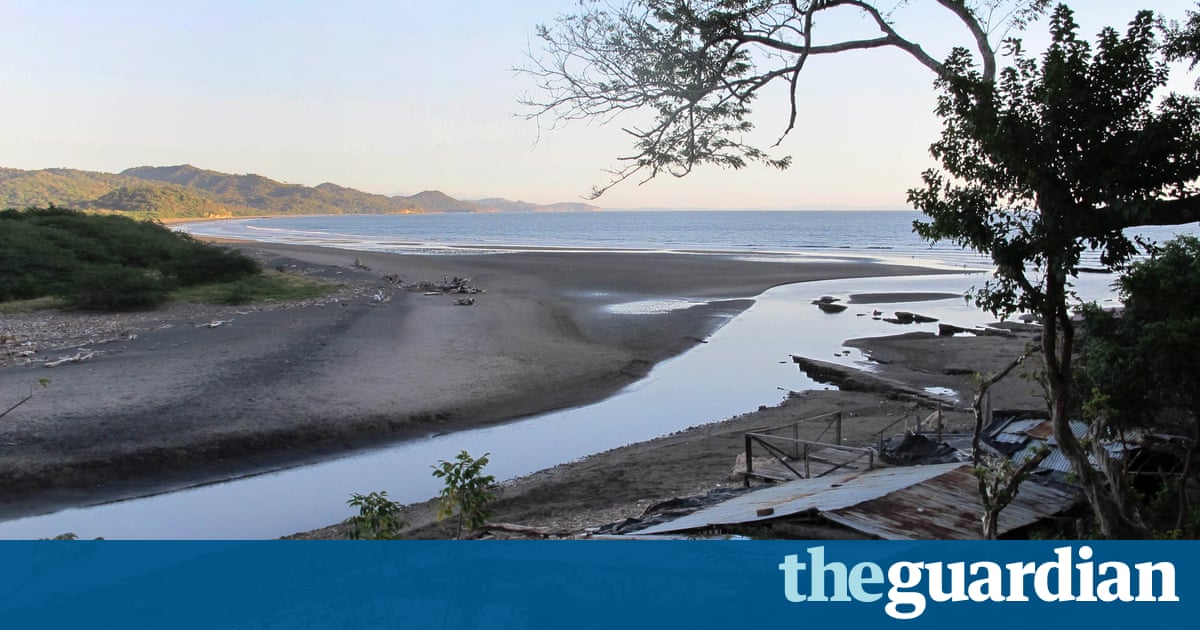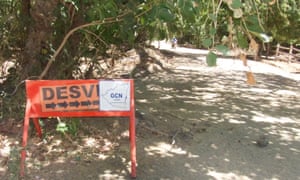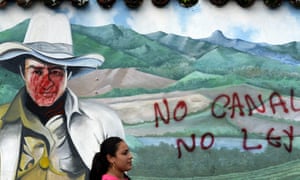Nicaragua canal: in a sleepy Pacific port, something stirs

The proposed gateway to a planned interoceanic canal shows little sign of activity but locals say Chinese experts have visited recently and work will start soon

At first sight, there is little to suggest the sleepy village of Brito is the starting point of one of the worlds most ambitious engineering projects.
Almost two years after ceremonial ground was broken on the Grand Transoceanic Canal of Nicaragua, the actual soil remains obdurately undisturbed by anything other than grazing cattle. There is no machinery, no noise, no activity.
Instead of legions of construction workers, the only people to be seen are a farming family sheltering on porch hammocks from the midday sun, and a couple of guards manning a gate on the rutted dirt track down to the river.
Yet contrary to the languid scene, local people have never been more convinced that the controversial mega-project is finally about to begin.
In recent weeks, they say, engineers have conducted geological surveys and marked up the area, farmers have been paid $3,000 to allow surveys of their land, and more than 500 acres have been purchased by the Chinese developer HKND for road-widening.
The company is absolutely serious. We had a big meeting last month and they told everyone, dont plant anything or build anything because you will only be compensated for the land, said Brito shopkeeper Manuel Cruz. They said they would start work on a pier within 15 days and bring in lots of workers in December or January.
Jos Mena, a farmer, said Chinese engineers had visited within the last month to bore holes and take readings at several points across his property. Mena said they used drilling machinery that was stored near the proposed construction site for the port, which is now guarded 24 hours a day.
Earlier this year, the developers also came to talk to him about land appropriation. I dont mind if it goes ahead as long as they do it well. They should not do too much damage and they should ensure that people get proper compensation, he said.

The uptick in activity at Brito suggests the project which many had assumed to have been killed off by funding problems, local opposition and environmental concerns may be about to move out of a dormant phase, though whether it gets much further may depend more on politics than finance or engineering.
Conceived by the government of Daniel Ortega, pushed through parliament in 2014 with almost no debate and backed by HKND, a mysterious Chinese company, the proposed $50bn waterway was envisaged as a superior rival to the Panama Canal. Designers say the biggest earth-moving operation in history will clear a 178-mile long, 30-metre wide channel so that even the worlds largest ships can pass through the isthmus between the Pacific and the Atlantic.
But it has been dogged by doubts and opposition. Shipping experts have questioned the viability of the project. The president of Panama, Juan Carlos Varela, last month described the rival canal as more speculation than reality.
Thousands of landowners along the route have rallied against the appropriation of their property. Unlike in Brito, there are no signs that the project is moving ahead in areas of strong protest.
The last time the Chinese came was two years ago when some people here threw stones at their car and broke a window. Since then, nothings happened, said Elizabeth del Carmen, a resident of Obrajuelo, which is where the canal is supposed to enter the western side of Lake Nicaragua.
Conservationists warn the dredging and perhaps also blasting of the lake could cause immense damage to ecosystems and freshwater supplies.
After an environmental impact assessment by London-based ERM urged further studies on the Atlantic coast and called for the relocation of the Pacific port, the developer announced a one-year delay.
Wang Jing, the Chinese telecoms tycoon behind the project, lost about 85% of his fortune in a stock market crash, and has not visited Nicaragua for a year, fuelling suspicions that the project may be dead.

But the government insists otherwise. Im sure it will go ahead. I have no reason to doubt it, the president of the canal commission, Manuel Coronel Kautz, told the Guardian. According to our schedule, we should initiate major works by the end of the year.
He said operations would begin in the next couple of months to build a deepwater dock at Brito, and that a deal had already been struck between HKND and Nicaraguan labour unions to supply 5,000 workers for the initial stages.
Local opposition, he said, would fade once property owners were offered compensation. HKND is said to have agreed to a total compensation budget of $300-400m to be shared among the 30,000 people along the route of the canal.
But there is a disagreement between the Nicaraguan authorities and HKND about the timing of the payments, he admitted. We want them to pay everyone at once. But they want to do it stage by stage, Coronel said.
For some critics, this raises the possibility that HKND may not go ahead with the full project, but instead use their concession to build ports and other developments on a piecemeal basis.
We believe the canal law creates a state within a state. It allows the expropriation of land to launder ill-gotten funds on projects that are outside the jurisdiction of the authorities, said Violeta Granera, whose civil society group, Movimiento Por Nicaragua, has supported the opposition movement by affected campesinos and demanded greater transparency.
The biggest unanswered question is the extent to which the Chinese government is supporting the project.

Coronel acknowledges Nicaragua does not know exactly the relationship between HKND and the authorities in Beijing.
The Chinese government and HKND have said they have nothing to do with one another, but there is no company in China that is not affected. That is how politics works there, he said.
Wang, who has never previously been involved in an engineering project on this scale, has denied being a proxy for the Chinese government or military. But without Beijings approval and financial backing, many observers feel it is unlikely the project will be able to move ahead.
If the Peoples Republic of China does not step forward, it wont happen. Wang Jing does not have the reputation to push this through. If it is just him, then the chances of this happening are zero. If the PRC steps in, then it is a big possibility, said Carlos Fernando Chamorro, editor of the Confidencial newspaper.
Nicaragua has diplomatic relations with Taiwan rather than China, which makes it politically difficult for Beijing to become overtly involved. Coronel, who was formerly deputy foreign minister, recently sent a memo to Ortega suggesting that this policy be changed in order to improve the logistics of flying in specialists and equipment.
But even if the two countries formalise diplomatic ties and the Chinese government facilitates the canal project, Coronel admits they must still overcome an even bigger political obstacle.
The only problem we see is what the US says about China coming into a small country in their area of influence. Thats something I doubt, he said. If they dont want it, it will be difficult.
Read more: https://www.theguardian.com/world/2016/nov/24/nicaragua-canal-interoceanic-preparations